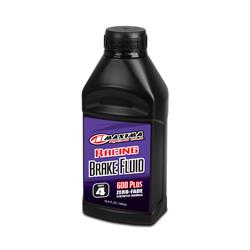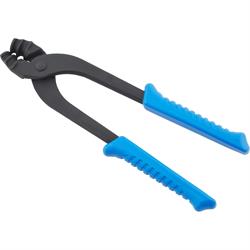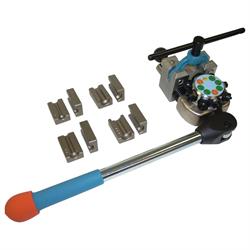Choose The Right Brake System Parts | Brake System Builder Tips
The braking system needed for a muscle car or hot rod build is not all that different than what may be found in a more modern car. The difference between them is that the modern car’s braking system has been designed by engineers to be correctly sized for the vehicle’s weight, wheel size, and braking ability. Your hot rod, on the other hand, is a completely different animal and the design of the braking system must be carefully thought out to ensure the system can effectively stop the vehicle. We’ve put together these braking system builder tips to aid you in your decision making for the proper brake system components.
Master Cylinder Location?
While many cars utilize the traditional firewall mounting location, including most muscle cars and classic trucks, some hot rods with small engine compartments will use a frame mounted master cylinder that lives under the floor. There are pros and cons to each location we’ll list out below but know that both locations have been used with success for decades. It’s just a matter of how much fabrication you want to deal with and the available room you have. Note too that with a frame mounted master cylinder that residual pressure valves are usually required (more on those later in our tips guide).
Firewall Mounted Master Cylinder
- Pro-Mounted on firewall for easy access for service
- Pro-Often easier to plumb brake lines and proportioning valve
- Con-Adds clutter to under hood appearance
- Con-Depending upon engine size/swap may interfere with engine
- Con-Some applications require custom firewall and dash mount brackets
Floor Mounted Master Cylinder
- Pro-Cleaner engine bay appearance
- Pro-Provides more room in engine bay for larger/wider engines
- Con-Access for service/fluid checks or repairs can be more challenging
- Con-Some applications require custom frame brackets/pedal mounts
Master Cylinder Mounting Solutions
These are some of our more popular mounting solutions for firewall and floor mount master cylinder installations
Power or Manual Brakes?
While the decision to use power or manual brakes is often one of personal preference, on heavier vehicles power brakes are a much welcomed addition. In the past adding power brakes was questionable on rowdy high lift cam equipped engines due to their lack of engine vacuum production. However, today you can use a dual diaphragm vacuum booster, supplement the engine vacuum with an electric vacuum source, or convert to hydroboost power brakes. Manual brakes are still a great option for light vehicles, race cars, and where there simply isn’t room for a vacuum brake booster or hydroboost unit (which requires a power steering pump to operate).
Combination Valve or Proportioning Valve?
Probably one of the most confusing aspects of designing a custom brake system is whether you need a combination valve or proportioning valve plumbed into your brake system. It certainly doesn’t help that many people incorrectly refer to a combination valve as a proportioning valve and vice-versa.
Proportioning Valve
The proportioning valve is used in disc/drum and disc/disc setups to balance the front to rear brake bias to prevent rear wheel lockup during hard braking. This happens due to there being less weight in the rear and the rear tires being “unloaded” during said hard braking, making them easier to lock up and thus potentially lose control of the vehicle. You will find both fixed and adjustable models. The fixed model works well for the brake system and vehicle weight it was designed for, but the adjustable version is usually preferred when balancing out custom brake sizes, staggered tire fitments, and more.
Combination Valve
A combination valve features several functions in one machined housing. Generally, there is the proportioning valve function for the rear brakes (which can be fixed or adjustable), pressure differential sensing for split braking systems and your brake warning light on the dash, and often a metering valve as well. The combination valve is used in a lot of disc brake conversion kits but can be purchased and plumbed separately if building a custom brake system for your project.
Are Residual Valves Required?
Whether you need residual valves and which pressure rating to choose (2 psi or 10 psi) will depend on your specific brake system setup. Residual valves can be used in both floor-mounted and firewall-mounted master cylinder applications. The residual valve maintains a small amount of brake line fluid pressure after the pedal has been released (think of them as a one-way valve up to a certain line pressure) to keep the drum brake shoes or disc brake pads extended and closer to the drum or rotor friction surface. This makes for a better pedal feel and braking response on the next application of the brake pedal, as it has less pedal throw before the brakes apply. The 2 psi valve is generally used for disc brake applications where the master cylinder is lower than the calipers (under floor mount for example). The 10 psi valves are used in drum brake applications in both firewall and under floor mount master cylinder setups. These valves are good insurance to not have to “double pump” the pedal to get a firm brake feel, and even if they are not needed, will do no harm by being plumbed into your brake system.
** Residual Pressure Valves**
What Size and Type of Brake Line to Use?
The two most commonly used domestic brake line diameters are 3/16-inch and 1/4-inch hard line. On older cars you may find a combination of both (often 3/16-inch for the front brakes and 1/4-inch for the rear brakes), but modern cars generally use 3/16-inch throughout, and 3/16-inch is also what is preferred for most custom brake system plumbing. That’s not to say 1/4-inch brake hard line isn’t used any more, but it is mainly used in heavier vehicles or where higher hydraulic volume and pressure is required.
3/16-inch Brake Hard Line
- Connections are -3 AN or 3/8-inch Inverted Flare Fitting (IFF)
- Most common size, making availability for emergency repairs easy
- Used in standard brake systems for passenger cars
- Suitable for regular braking system needs
- Easy to work with for flaring and bending and cost-effective
- Many custom fittings available for 3/16-inch brake hard line size
1/4-inch Brake Hard Line
- Connections are -4 AN or 7/16-inch Inverted Flare Fitting (IFF)
- Larger size for heavy-duty or high-performance setups
- Handles higher hydraulic pressure, ideal for larger or demanding vehicles
- Used in custom or performance brake systems
- Slightly harder to flare and bend and more expensive
Brake Hard Line Material Choices
Steel brake lines are durable and budget friendly, easy to bend and flare, but can be prone to rust over time.
Stainless steel brake lines are highly corrosion resistant, can be easily polished for a show appearance, and are ideal for harsh conditions, but they are harder to bend and flare.
Polyvinyl Fluoride (PVF) coated steel brake lines offer the same ease of bending and flaring as regular steel brake line but offer corrosion resistance at a lower cost than stainless steel brake line.
Nickel Copper brake lines, often referred to as “NiCopp” provide excellent corrosion resistance and flexibility while offering a classic car “copper brake line” appearance that is legal to use on today’s cars.
Should Brake Lines Be Single or Double Flared?
Single inverted flare brake lines are flared once to a 37-degree angle and use special tube nuts and sleeves to provide the seal. These 37-degree flare fittings are sized by the standard Army/Navy (AN) fitting scale. The most common are -3 AN, which is comparable to a 3/16-inch brake line. You will find some fittings for -4 AN as well (1/4-inch brake line). Double flare brake lines are more commonly used in production car brake lines and require the flaring operation to be performed twice, creating a second flare seat on the end of the brake hard line. These flares are at 45-degrees and are not compatible with single flare fittings (though there are adapters available to combine brake soft lines/fittings). Most flaring tools are designed for one flare or the other, so ensure you are using the correct flaring tools. See the tools section below for more details.
37-Degree Single Flare Fittings
45-Degree Double Flare Fittings
Hot Rod Brake System Diagram
Should Silicone or Standard Brake Fluid Be Used?
Regular DOT 3, DOT 4, or DOT 5.1 brake fluid is what most of us are familiar with, so why use DOT 5 (silicone based) brake fluid instead? Standard brake fluid is made with a Glycol base product. This product is hygroscopic, meaning it absorbs moisture in the system. This is by design, as the moisture can boil (or freeze) causing braking issues, and of course can rust through steel brake lines and other components. Where DOT 3, 4, and 5.1 differ is in their boiling points. DOT 4 has higher wet and dry boiling points than DOT3 and is, today, the “go to” brake fluid for most vehicles. DOT 5.1 is higher still when it comes to boiling points. It is safe to top off a system with a higher DOT level (top off a DOT 3 system with DOT 4 fluid) but not the other way around. DOT 5, being silicone based, does not absorb water and is incompatible with other brake fluids. We only recommend using DOT 5 on brand new braking systems where regular brake system flushes are planned and there is a high concern for paint/surface protection, as DOT 5 does not damage paint like Glycol based fluids do. Bleeding DOT 5 can be a pain as well since the fluid likes to trap air bubbles.
Brake Fluid Types
Brake System Tools to Get the Job Done Properly
Whether it is cutting and flaring new brake lines, bending up custom lines, or cleanly straightening a coil of bulk brake line, we have the right tools to make your custom brake system plumbing project go smoothly!
- Complete Hard-Line Tool Kit: Cut/Bend/Flare, 3/16 Inch
- Tubing cutter: 1/8 to 1-1/8 Inch
- Deluxe 37-Degree Brake Line Turret-Style Flaring Tool
- Deluxe 45-Degree Brake Line Flaring Tool
- 3/16 Inch Handheld Tubing Straightener
- 1/4 Inch Handheld Tubing Straightener
- Brake And Fuel Line Bending Pliers, 3/16 And 1/4 Inch O.D. Tubing
- Mini Tubing Bender
- 3/16 Stainless Steel Single Line Clamps, Pack of 12
- 1/4 Stainless Steel Single Line Clamps, Pack of 12
- Insulated Brake Line Mount Clamps, 3/16 Inch, Bag of 10
- Insulated Line/Tubing Mount Clamps, 1/4 Inch, Bag of 10

















